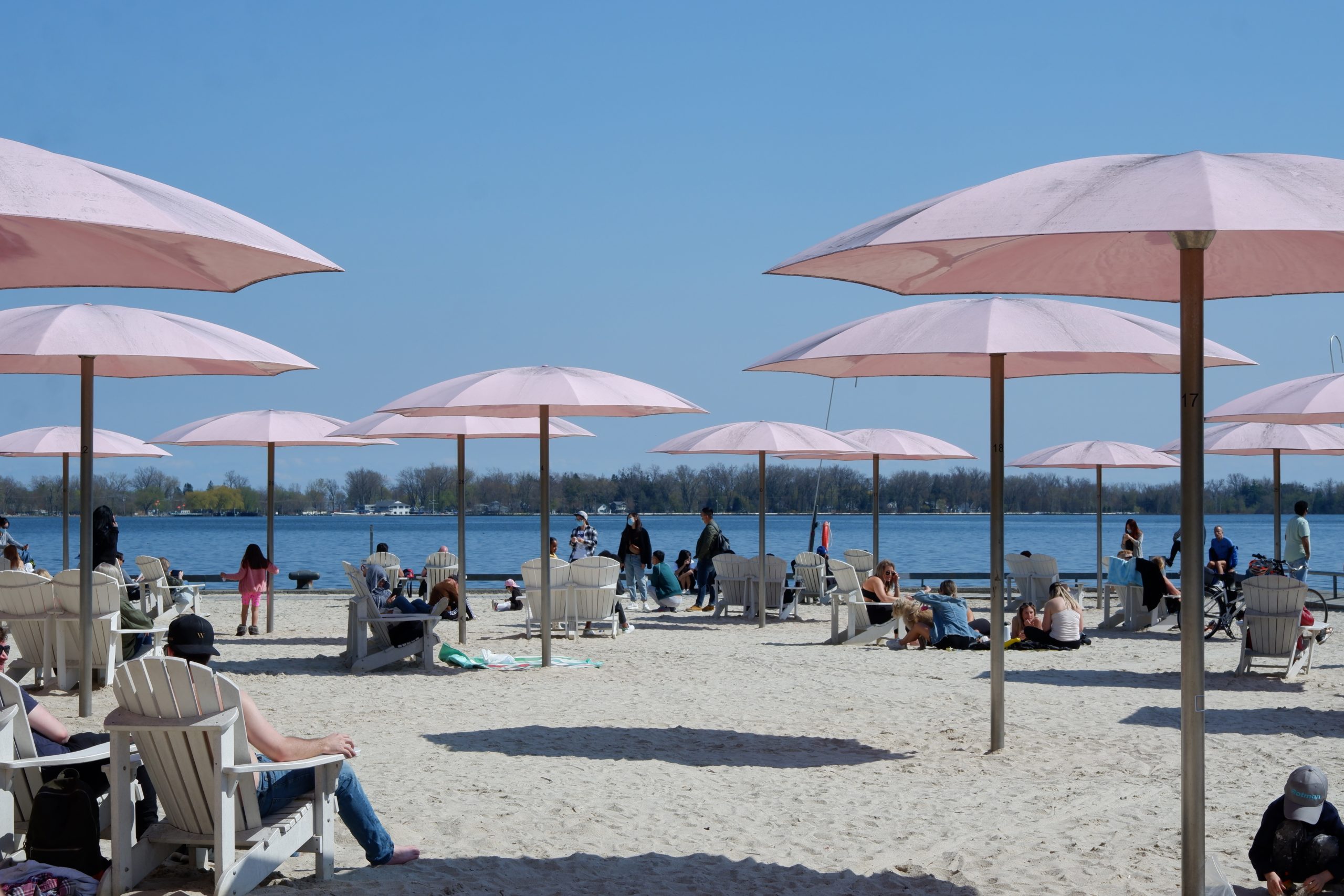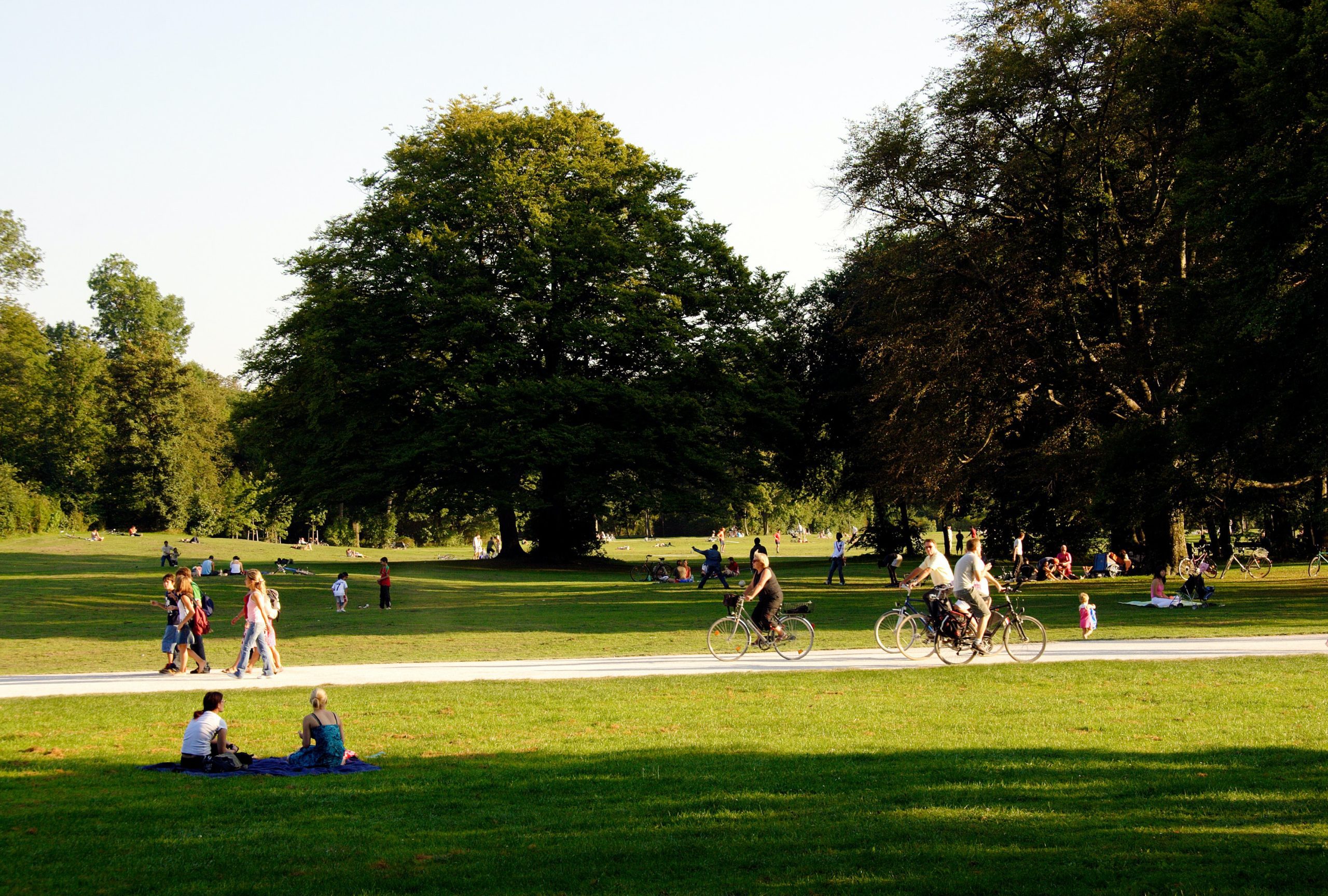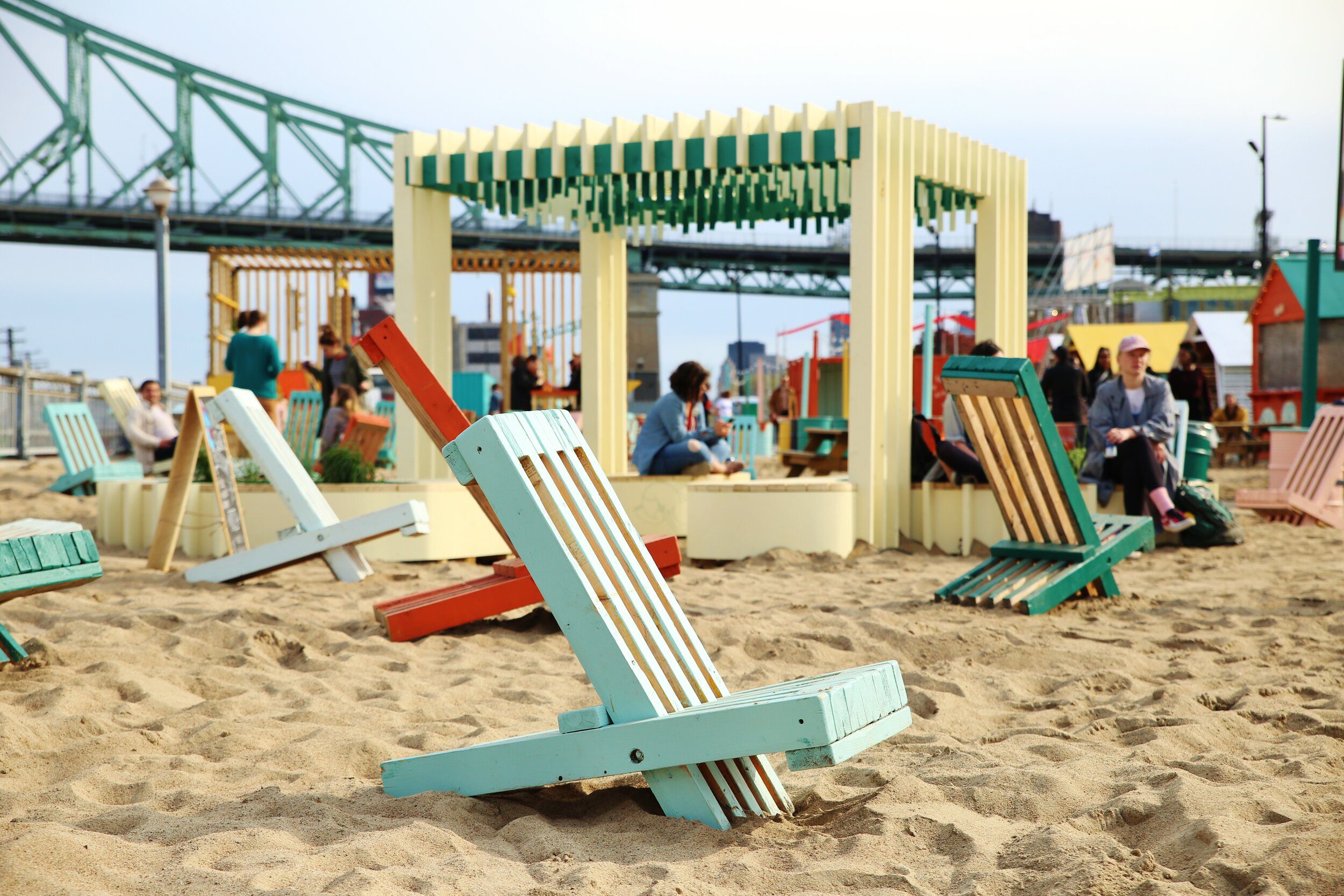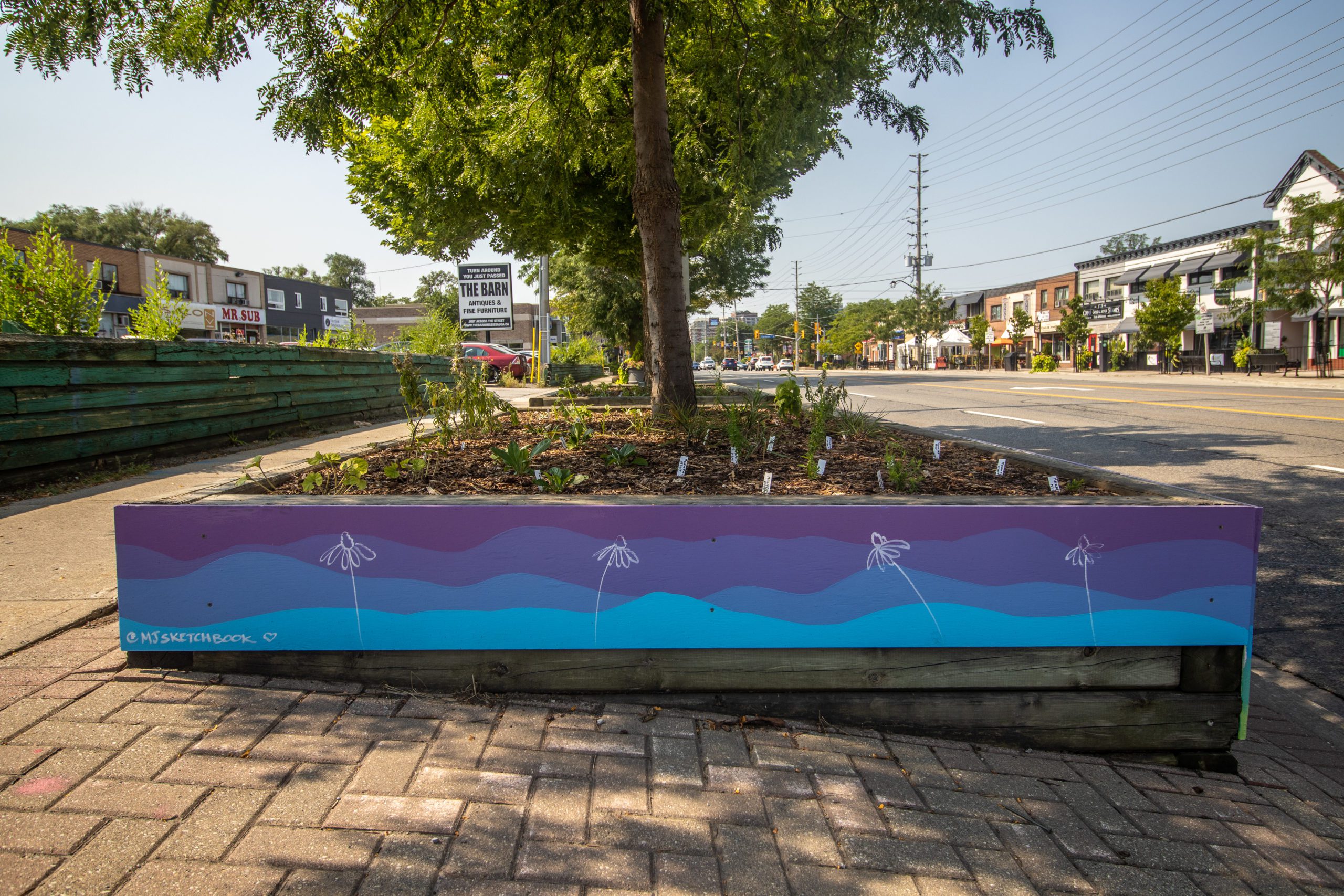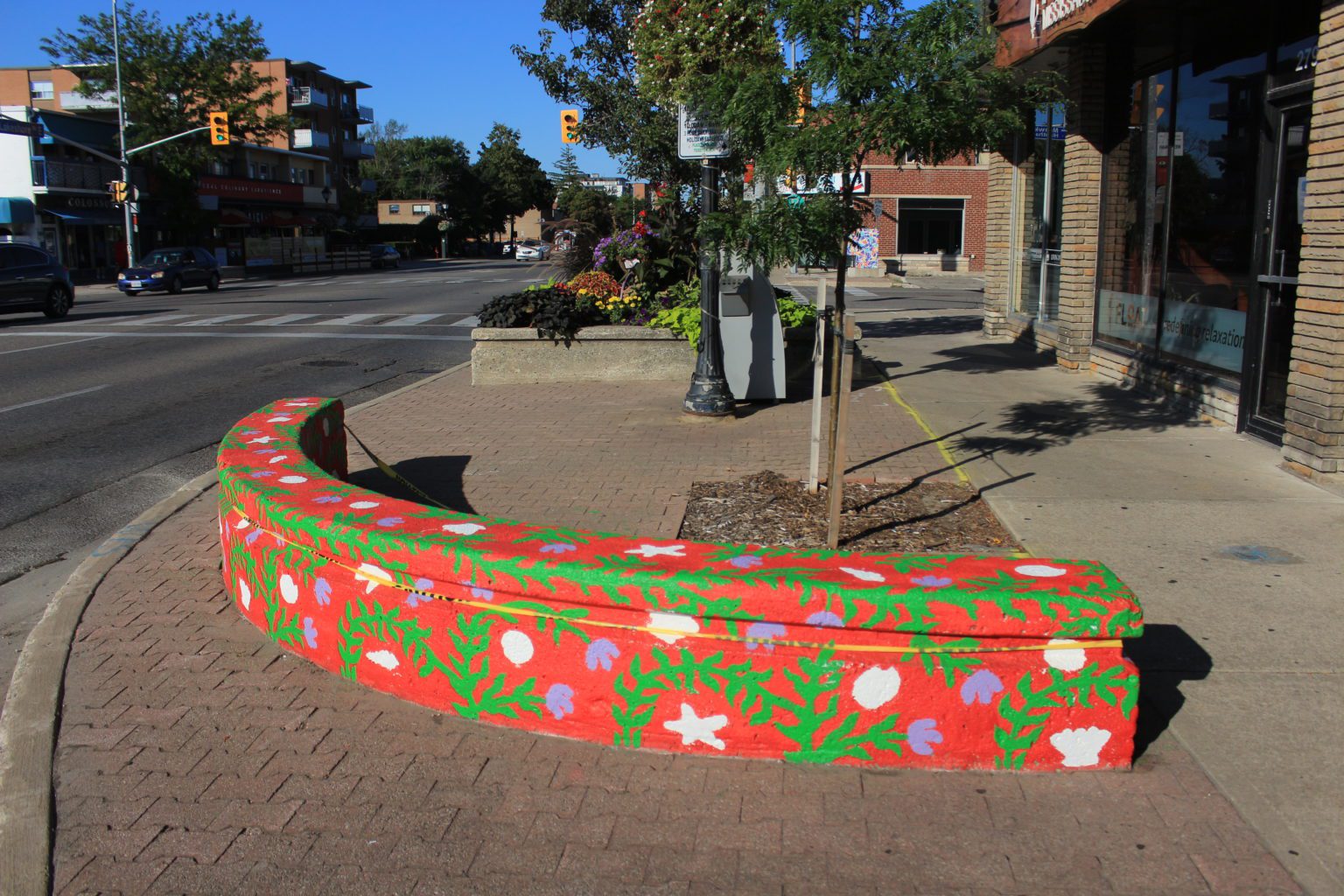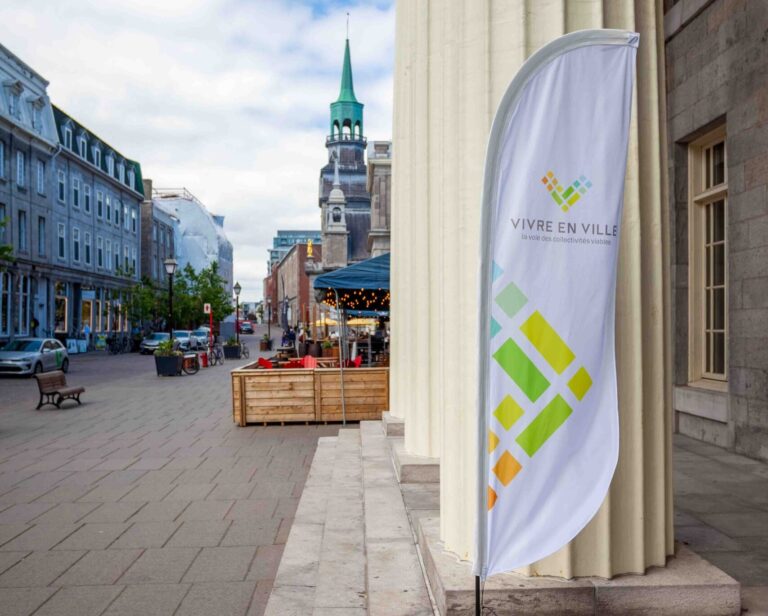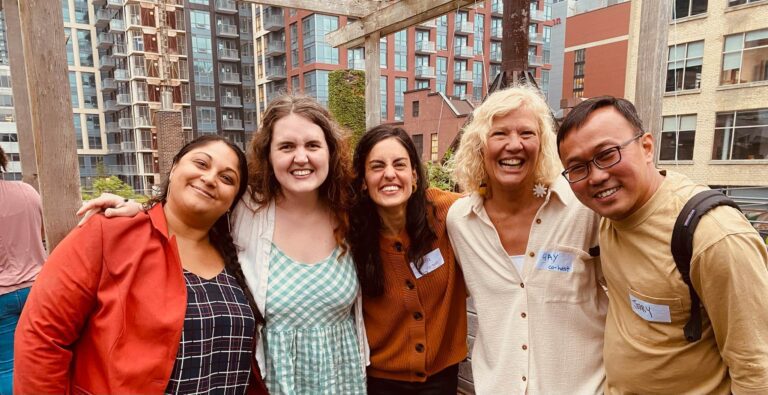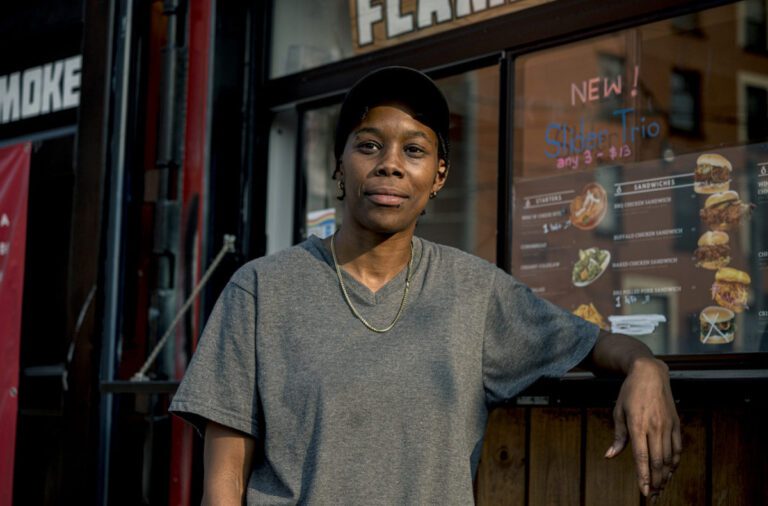Murales réalisées par l'artiste Katherine Montigny dans le cadre de l'initiative I HeART Main Street 2022 au centre-ville de Timmins. Photo par Brian Coleman
STEPS Public Art est une organisation culturelle primée qui apporte l'art public aux communautés canadiennes dans le cadre du processus de création de lieux. STEPS Public Art travaille avec diverses parties prenantes pour renforcer les liens communautaires et mettre en lumière les talents de divers artistes canadiens dans les espaces publics à travers le pays. Depuis 2011, elle a réalisé plus de 300 installations d'art public, facilité plus de 600 opportunités d'artistes rémunérés et créé plus de 1000 opportunités de leadership pour les jeunes. Dans le cadre de l'initiative "Communautés en santé" en 2021, le projet "I HeART Main Street" continue de donner vie à des espaces sous-utilisés le long des artères commerciales. des espaces sous-utilisés le long des rues commerçantes principales grâce à un art multidisciplinaire et communautaire.
Cette histoire a été écrite par Eva Morrison et publiée sur le blog d'art public STEPS le 15 août 2022. Il a été partagé ici avec l'autorisation de l'auteur et de l'organisation.
Comment les initiatives artistiques et culturelles peuvent "créer" des espaces
Par : Eva Morrison
Vous avez peut-être entendu l'expression "creative placemaking" dans des discussions récentes sur des projets de développement urbain, des propositions d'art public ou des préoccupations concernant l'embourgeoisement des quartiers. Il existe de nombreux exemples de création de lieux dans les villes canadiennes, avec une variété d'échelles, de résultats et d'objectifs pour l'espace public. Mais quelle est la définition réelle de ce terme ?
Le Project for Public Places explique que le concept de "placemaking" est apparu dans les années 1960, avec un mouvement en faveur d'un aménagement urbain qui donne la priorité aux personnes, plutôt qu'aux bâtiments ou aux voitures. Il s'agissait d'aménager davantage d'espaces publics pour que les citoyens puissent y passer du temps : créer des places, des allées, des parcs et des espaces naturels attrayants, sûrs et accueillants.
Sugar Beach à Toronto a été créée comme un espace public pour les piétons. Source de l'image : Kateryna Topol.
La création de lieux de vie aujourd'hui
Plus récemment, l'aménagement du territoire est devenu une approche à multiples facettes qui s'inspire des études urbaines, de la planification environnementale, de la sociologie, de l'architecture et du design pour améliorer l'habitabilité des espaces urbains. L'idée d'un aménagement "créatif" ajoute un autre élément au mélange, en utilisant les arts et la culture pour revitaliser les espaces, stimuler l'économie et mettre l'accent sur la cohésion de la communauté.
L'aménagement d'un lieu est à la fois un processus pratique et un objectif conceptuel ; l'aménagement créatif d'un lieu vise à améliorer physiquement les espaces publics - quartiers, bâtiments et parcs - d'une manière qui renforce également l'identité du lieu. Mais les espaces urbains ne sont pas vides et n'attendent que d'être aménagés ; pour favoriser un changement équitable, il est important de tenir compte de l'histoire, de la fonction et de l'importance culturelle d'une zone et d'impliquer les communautés dans les nouveaux développements.
L'implication de la communauté est un élément crucial de la création d'un lieu créatif ; l'insertion d'arts et de culture qui ne s'adressent qu'à un seul groupe ou qui n'attirent que la "classe créative" peut entraîner le déplacement des habitants d'un quartier en voie d'embourgeoisement. En partant de la base, les projets de régénération créative peuvent répondre aux besoins des personnes qui occupent déjà l'espace et accueillir les nouveaux arrivants.
Au lieu de considérer les résidents et les visiteurs comme des consommateurs de l'aménagement urbain, le creative placemaking équitable reconnaît le patrimoine, les communautés résidentielles et les diverses utilisations de la zone ciblée afin de positionner les gens comme des "fabricants" de l'espace, définissant leur propre quartier. Les projets de création de lieux réussis peuvent mettre en évidence ou façonner les caractéristiques uniques d'un lieu commun tout en envisageant un avenir où tous les membres de la communauté ont un sentiment d'appartenance et d'appropriation.
Les espaces urbains, comme les parcs publics, sont utilisés par de nombreuses communautés à la fois et sont conçus pour remplir différentes fonctions. Source de l'image : Ignacio Brosa.
LA CRÉATION DE LIEUX DANS LES VILLES CANADIENNES
Alors, à quoi ressemble le creative placemaking dans la pratique ? Tous les types de stratégies de développement qui utilisent les arts et la culture pour stimuler la fonction, les opportunités financières, le tissu social et le bien-être environnemental dans un espace partagé utilisent les principes du creative placemaking. Les plus significatives prennent en compte l'engagement et l'impact de la communauté.
Les définitions des "arts et de la culture" peuvent inclure les arts visuels, tels que les peintures murales, les sculptures et les installations, les spectacles, tels que les spectacles musicaux, le théâtre ou la parole, ainsi que d'autres expressions culturelles, telles que la préparation des aliments, les méthodes de jardinage, les cercles d'artisans et bien d'autres formes de créativité. Ces initiatives existent dans des espaces commerciaux, résidentiels et publics à travers le pays ; vous pouvez les rencontrer en vous promenant, en vous arrêtant sur un marché alimentaire ou en rencontrant un ami autour d'un café.
ESPACES EXTÉRIEURS DURABLES : EVERGREEN BRICKWORKS À TORONTO
Construite à partir d'une ancienne carrière et d'une usine de briques abandonnée dans l'est de Toronto, l 'Evergreen Brickworks a été développée comme le premier centre environnemental communautaire à grande échelle du Canada. Grâce à une réutilisation adaptée, ce projet créatif a transformé les bâtiments existants en un centre accueillant sans compromettre l'histoire ou l'intégrité du site. The Brickworks a trouvé un équilibre entre la préservation de l'écosystème naturel de la vallée de Toronto et la facilitation de l'utilisation communautaire dans la plus grande ville du Canada. En organisant un marché fermier de produits de l'Ontario, des soirées gastronomiques à thème, des leçons de patinage, une pépinière et un programme d'éducation durable pour les enfants et les adultes, la programmation de la Brickworks célèbre la beauté de l'espace vert tout en attirant un public plus large qui contribue à façonner l'espace et à en profiter de manière respectueuse.
Visitez en vidéo le site de la briqueterie Evergreen, filmé et édité par Gold Media.
CONCEPTION PARTICIPATIVE : LE FRONT DE MER DE HALIFAX
Le front de mer de Halifax est un autre projet de revitalisation qui s'appuie sur la beauté naturelle d'un espace tout en promouvant l'économie locale et en accueillant de nouveaux visiteurs. La province de Nouvelle-Écosse, avec l'aide de la communauté locale, a investi dans des infrastructures fonctionnelles telles que des hamacs orange colorés, des chaises muskoka, une aire de jeux revitalisée et une fontaine de refroidissement afin d'élargir l'utilisation de la promenade pittoresque le long du port de Halifax. L'aménagement du front de mer a toujours fait appel à la participation de la communauté : le réaménagement en 2011 de la populaire aire de jeux du front de mer a été influencé par des séances de consultation avec les enfants et les familles de la région, et T.J. Maguire, responsable de la conception chez Develop Nova Scotia, souligne la "politique de vision partagée" des récents projets d'aménagement du territoire . La participation au processus de conception peut renforcer les liens des habitants avec le lieu et entre eux. Ces stratégies créatives d'aménagement du territoire génèrent un engagement économique et social dans leur quartier riverain, servant la vision de la communauté et attirant les visiteurs vers les entreprises locales.
LOISIRS ACCESSIBLES : MARCHÉ POP-UP DU PIED DU COURANT À MONTRÉAL
Le Village au Pied du Courant offre aux visiteurs des sièges communs et une programmation sur une plage manufacturée à Montréal. Crédit photographique : Marie-Ève Dion
Le marché du Pied Du Courant à Montréal est une initiative saisonnière de création de lieux qui transforme le pied du pont Jacques Cartier en un marché pop-up sur le thème de la plage, avec du sable et des parasols. La Pépiniére a développé ce projet en 2015, en mettant l'accent sur la participation de la communauté et des designers émergents. Il en est résulté des pavillons d'artisanat, des cours de yoga, des soirées de danse et un marché alimentaire qui est devenu un lieu de rassemblement pour de nombreux publics différents : des familles avec des enfants, des groupes de jeunes prenant un verre, des touristes découvrant la culture des parcs de Montréal et des habitants se promenant dans le sable. Le centre communautaire est gratuit et vise à accueillir tout le monde, avec des options commerciales qui permettent de créer des opportunités économiques dans la région. Les marchés alimentaires peuvent être une forme efficace de création de lieux, en redynamisant les espaces urbains et en permettant à la communauté d'informer sur leur utilisation.
L'URBANISME TACTIQUE EN TANT QUE CRÉATION DE LIEUX
Les activités de création de lieux ne doivent pas nécessairement prendre la forme d'un grand projet de revitalisation comme le Halifax Waterfront ou l'Evergreen Brickworks ; des efforts à plus petite échelle et à faible budget peuvent également avoir un impact important sur nos espaces publics. L'urbanisme tactique enrichit les quartiers en apportant des modifications mineures, ponctuelles ou temporaires à l'environnement bâti d'un paysage urbain. Ces interventions prennent en compte les contextes et les communautés spécifiques de la zone et ciblent les problèmes réalisables ou les améliorations potentielles pour rendre l'espace public plus confortable et plus sûr. Les initiatives créatives telles que les décalcomanies sur les trottoirs, l'habillage des devantures de magasins et des vitrines, le balisage des sentiers, le mobilier urbain, l'aménagement des espaces verts et l'animation des parkings peuvent rendre les espaces plus agréables à vivre et plus inspirants.
Jardinières peintes en bleu et violet créées par Marie-Judith Jean-Louis pour l'activation de l'art public de la rue principale de la ZAC du village de Clarkson. Crédit photographique : Selina McCallum.
Tout au long de la pandémie, il a été essentiel de "créer" et de conserver des espaces extérieurs accessibles, sûrs et agréables. Dans ce contexte, STEPS a développé l'initiative Creative Placemaking Rapid-response (CPR) afin d'encourager les communautés et d'aider les résidents à se connecter et à prendre des mesures pour égayer leurs espaces publics. Ce type d'aménagement créatif peut utiliser une approche tactique de l'urbanisme pour cibler la durabilité, comme les jardinières sur le thème des pollinisateurs de la ZAC de Clarkson Village, promouvoir la participation de la communauté, comme les projets de recyclage et de bricolage menés par la communauté de Home Base, ou rajeunir les espaces récréatifs et sociaux, comme le mobilier d'extérieur peint de Leone McComas.
Le concept de création de lieux inclut un éventail de secteurs, de parties prenantes et de tactiques et peut déboucher sur une vaste gamme de projets d'art public et de programmes culturels. Alors que les villes canadiennes continuent de relever les défis liés à la pandémie, les projets de création de lieux à travers le pays peuvent favoriser la connectivité, la durabilité et la collaboration afin de créer des espaces communautaires positifs et équitables.
Une aire de repos publique à Port Credit, en Ontario, peinte par l'artiste Erin McCluskey pour animer la rue principale dans le cadre du programme I HeART Main Street du STEP. Crédit photographique : Selina McCallum
EVA MORRISON
Rédactrice de contenu culturel
Cet article a été rédigé par Eva Morrison (elle/il), écrivaine, conservatrice et peintre basée à Montréal. Son travail a récemment été publié par la Fête de la culture, Winnipeg Arts et FARR Montréal. Elle a obtenu un baccalauréat en beaux-arts de l'Université Concordia en 2019, avec une spécialisation en histoire de l'art et en arts plastiques.

